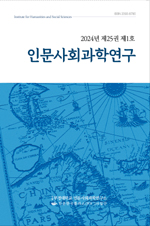- 영문명
- Envisioning the Age of Grand Theaters : Aspirations and Initiatives of Japanese Colonial Settlers in 1930s Keijō
- 발행기관
- 부경대학교 인문사회과학연구소
- 저자명
- 김순주(Sunju Kim)
- 간행물 정보
- 『인문사회과학연구』제26권 제3호, 149~177쪽, 전체 29쪽
- 주제분류
- 사회과학 > 사회과학일반
- 파일형태
- 발행일자
- 2025.08.31
6,280원
구매일시로부터 72시간 이내에 다운로드 가능합니다.
이 학술논문 정보는 (주)교보문고와 각 발행기관 사이에 저작물 이용 계약이 체결된 것으로, 교보문고를 통해 제공되고 있습니다.

국문 초록
식민지 시대 경성(京城)은 1935~1936년에 이르러 경성부민관과 대형 영화관의 개관을 계기로 이른바 ‘대극장 시대’에 접어드는 중요한 전환점을 맞이하였다. 인구 40만 명에 이르는 식민지 수도에서 대극장이 부재하다는 인식은 부민 사이에서 그 건립에 대한 요구가 확산되는 촉매로 작용하였다. 대극장 건설 시도로 이어진 직접적인 계기는 1929년에 발생한 경성극장(京城劇場)의 소실이었다. 이 연구는 경성극장의 소실이 재경성 일본인들로 하여금 대극장 건설에 나서도록 견인한 과정을 고찰한다.
‘부내 유일의 극장’으로 불렸던 경성극장은 거류민단 시기에 개관한 수좌(壽座)의 유산을 계승한 극장이었으며, 개관 후 경영난을 감수하면서도 10여 년간 존속하였다. 이러한 극장사적 계보는 재경성 일본인 사이에서 대극장 건설을 지지하는 여론을 뒷받침하는 중요한 기반을 형성하였다. 특히 일본 본토에서 내방한 배우들의 공연은 경성극장의 위상을 공고히 하는 역할을 하였다. 한편, 식민지 조선의 중심부에 위치한 일본인 극장은 일본 공연산업과 식민지 순업을 매개하는 핵심적 인프라이자, 제국의 주요 극장을 연결하는 순업 네트워크의 ‘교두보’ 역할을 수행하였다. 이러한 맥락에서 재경성 일본인들의 대극장 건설 시도는 일본 공연산업과 구조적으로 긴밀히 결합된 현지적 전략이었다.
본 연구는 1930년대 전반기 경성 극장계에서 핵심적이자 논쟁적인 쟁점이 ‘대극장’ 건설이었음에 주목하면서, 궁극적으로 ‘미완의 프로젝트’로 귀결된 재경성 일본인들의 이 시도가 식민자 종족 집단에게 지닌 의미를 해명하고자 한다. 이를 통해 극장이 단순히 경제적 자본 논리로 환원될 수 없는 복합적 성격을 내포하고 있었음을 드러내는 동시에, 일본 공연산업의 전개에서 재경성 일본인 극장이 수행한 역할이 대극장 건설 시도로 이어지는 역사적 맥락을 밝히고자 한다.
영문 초록
This paper examines the attempts by Japanese settlers to construct “grand theaters” in colonial Seoul—then known as Keijō—during the first half of the 1930s and highlights how this project reflected their urban and cultural aspirations. The study situates these initiatives within a city that, by the early 1930s, had grown to nearly 400,000 residents but where the settler community in particular perceived the absence of a performance venue commensurate with its size and status as a significant shortcoming.
The destruction of the Keijō Theater by fire in 1929 intensified this demand within the Japanese community. For more than a decade, the Keijō Theater had served as the city’s only permanent venue, despite chronic financial losses. Inheriting the legacy of the Suza, originally established under the Settlers’ Association, the theater played a pivotal role in shaping settler opinion in favor of new construction. At the same time, the Keijō Theater hosted touring actors from Japan proper, enhancing its prestige and integrating colonial Seoul into the wider theatrical circuits of imperial Japan. It thus functioned both as a form of symbolic capital for Japanese settlers and as critical infrastructure linking metropolitan Japan’s performance industry to its colonial outpost.
By analyzing Japanese settlers’ ultimately unrealized projects for grand theaters, this paper argues that theatrical enterprises in Keijō cannot be understood solely through the logic of economic capital. Rather, they embodied a complex character that intertwined economic, political, and cultural dimensions. This paper further situates these attempts within the broader trajectory of Japanese theatrical enterprises and the role of theaters in colonial Seoul.
목차
Ⅰ. 서론
Ⅱ. ‘상징자본’으로서 극장, 경성극장의 소실
Ⅲ. 제국 공연 순업과 식민지 공연 기반
Ⅳ. 1930년대 재경성 일본인들의 대극장건설 시도, 그리고 반대 여론
Ⅴ. 결론
참고문헌
키워드
해당간행물 수록 논문
- 해양교육네트워크로 보는 해양교육 현황과 과제
- 관우, 관제, 관푸치노 - 가치관 전환시대의 고전읽기
- 『표준국어대사전』기반 독일어계 외래어의 형태 변화와 품사 분포에 대한 계량적 분석
- 산업재해예방의 정책수단 실효성
- 철학교육에서의 도덕 판단 구성과 반성적 평형: 직관의 역할 재검토
- 중국기독교 신학교육의 재구조화와 전망
- 토마스 아퀴나스의 인간론에 근거한 죽음 이후의 인간의 상태연구
- 미디어 콘텐츠를 활용한 중국어 “幫+NP+VP” 구문의 실제적 연구
- 에도시대 무사(武士)의 부업(副業)과 장인(匠人)정신의 상관관계 연구(2) - 고케닌(御家人)의 부업을 중심으로
- 『취분운략(聚分韻略)』제본(諸本)에 걸친 경섭(梗攝)의 자음형(字音形)에 대하여
- 식민지 조선의 ‘대극장’ 건설론 - 1930년대 재경성 일본인들의 비전과 미완의 시도
- 한국어와 키르기스어의 보조동사 인식 및 사용 양상 - ‘-어 버리다’와 ‘-어 보다’를 중심으로
- 한국·일본·베트남한자음 자음형의 창출요인에 관한 연구 - 최적성이론을 적용한 타국 한자음과의 비교를 통하여(齒上音)
- 산업별 고용 중기 전망의 예측오차 영향요인 분석
- 정서적 긴장과 신뢰: 신뢰의 부정적 효과와 역설
- 2025년 마크롱 대통령 담화에 나타난 프랑스와 아프리카의 관계 변화 양상 연구 - 서아프리카를 중심으로
- 2025년 한일 첫 정상회담 뉴스 영상에 대한 한·일 댓글 분석연구 - 정당화 전략을 중심으로
- 부산 시민의 내향적 국제화 인식 개선 방안: 국제화 인식 설문조사를 바탕으로
- 우레이(Wu Lei) 읽기: 한국 미디어가 보도/재현하는 양상과 방식의 한국적 의미
- 뉴스 기사를 통한 미국 다문화 리터러시 주제 구조 탐색: BERTopic 기반 분석
- 조직정치지각이 직무스트레스, 직무만족, 조직몰입 및 혁신행동에 미치는 영향: 재중 한국기업의 중국 현지 종업원을 대상으로
- 대학생의 프로티언 경력태도와 진로준비행동 간의 관계에서 진로역량 및 진로태도성숙의 매개효과
- 어머니의 양육 스트레스와 유아 자기조절력의 관계에서 어머니 정서표현성의 병렬이중매개효과
- 활자 노출 빈도와 단어 재인 시 음운 활성화 강화와의 관계
- 외국인 유학생의 교육관광 만족요인 분석에 관한 연구 - A 대학교 사례를 중심으로
참고문헌
관련논문
사회과학 > 사회과학일반분야 BEST
- AI와 디지털 문화 산업의 결합에서 저작권 및 윤리적 규범 준수의 필요성 연구
- 인공지능(AI)과 윤리
- 종합병원 간호사의 환자안전문화인식과 조직의사소통만족이 안전간호활동에 미치는 영향
사회과학 > 사회과학일반분야 NEW
- AI 기반 포토리얼리스틱 비디오를 활용한 전문 간호사 고위험 약물 교육콘텐츠 - 개발 및 타당성 평가
- ATP 측정을 활용한 어린이집 급식 위생 관리의 객관적 평가 지표 도입 필요성
- GIS DB 구축 용역에서의 안전보건관리비와 용역기간 적정성에 관한 실증적 분석
최근 이용한 논문
교보eBook 첫 방문을 환영 합니다!

신규가입 혜택 지급이 완료 되었습니다.
바로 사용 가능한 교보e캐시 1,000원 (유효기간 7일)
지금 바로 교보eBook의 다양한 콘텐츠를 이용해 보세요!



